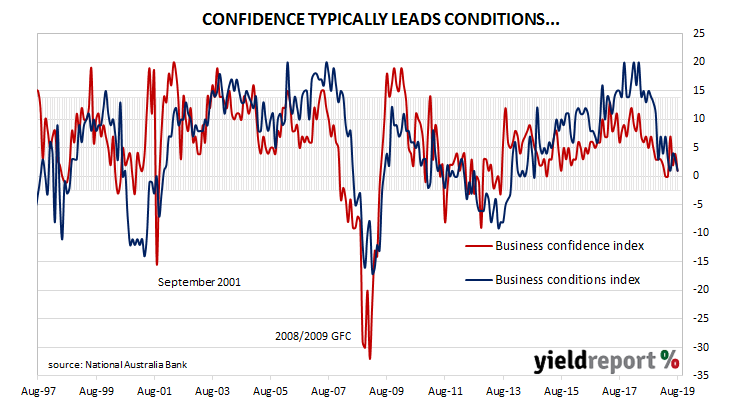Australian business conditions were robust in the first half of 2018 and a cyclical-peak was reached in April of that year. Although they remained well above average for some months, readings began to slip and by the end of 2018, they had dropped to below-average levels. Forecasts of a slowing domestic economy began to emerge in the first half of 2019 and the latest readings from NAB’s survey are consistent with this theme.
According to NAB’s latest monthly business survey of 400 firms conducted in the latter part of August, business conditions deteriorated for a second consecutive month after a brief spike in June. Since late 2018, NAB’s conditions index had bounced between 3, which is on the low side of normal and 7, which is about average. The index then broke through this lower bound in May 2019. The latest reading registered 1, a modest fall from July’s revised figure of 3.
Largely in line with NAB’s condition index, the latest reading of the confidence index fell from July’s figure of 4 to 1 in August, well below its long-term average reading of 6. Typically, NAB’s confidence index leads the conditions index by approximately one month, although some divergences appear from time to time.
Westpac senior economist Andrew Hanlan said the survey “reveals that policy stimulus has yet to provide a boost to the economy. In a surprise result, conditions not only failed to rise but weakened further.” Morgan Stanley Australia strategist Chris Read agreed and said there was “no sign in this release of an improvement in either outlook or current trading as a result of recent tax and rate cuts.” He then went on to say he was “cautious on the extent to which the stimulus to date will pass through to a sustained pickup in spending.”

